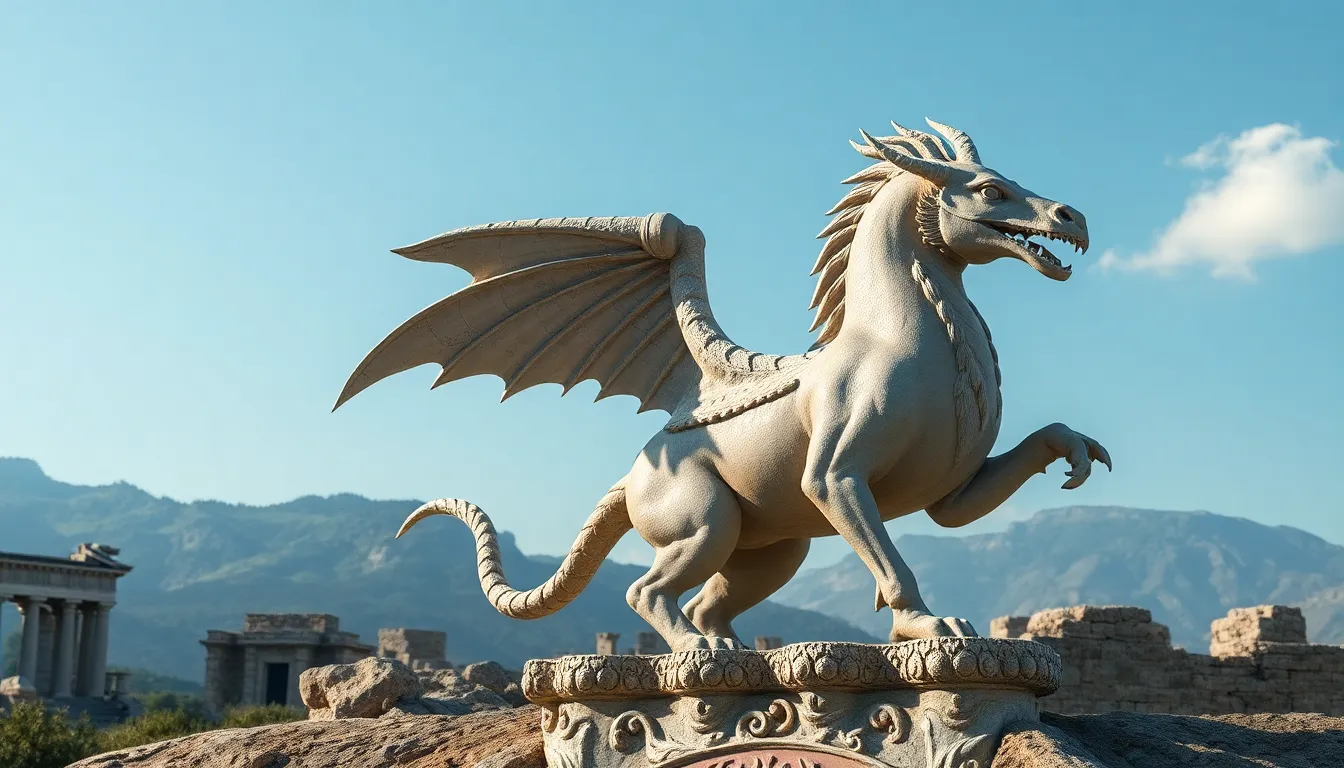The Chimera in Historical Context: Understanding Its Place in Ancient Greece
I. Introduction
The Chimera is one of the most fascinating creatures in ancient Greek mythology, often depicted as a monstrous hybrid that embodies chaos and destruction. This mythological figure has captivated the imagination of scholars, artists, and enthusiasts for centuries, serving as a powerful symbol of the struggles that ancient Greeks faced in their understanding of the world around them.
This article aims to explore the origins, characteristics, and cultural significance of the Chimera, as well as its role in ancient Greek literature and its lasting legacy in modern culture.
II. Origin and Etymology of the Chimera
The earliest references to the Chimera can be traced back to ancient texts, notably in Homer’s “Iliad” and Hesiod’s “Theogony.” These works provide crucial insights into the creature’s nature and its significance in Greek mythology.
The term “Chimera” itself comes from the Greek word “Χίμαιρα,” which means “she-goat.” This etymology reflects the creature’s composite nature, as the Chimera is often described as having the body of a lion, the head of a goat protruding from its back, and a serpent for a tail.
Throughout Greek literature, the Chimera serves not only as a formidable opponent for heroes but also as a metaphor for chaos and the unknown, representing the fears and challenges faced by the ancient Greeks.
III. The Chimera in Mythology
The Chimera is characterized by its fearsome appearance and destructive abilities. Descriptions often depict it as breathing fire, a trait that heightens its threat level to those who dare confront it.
Its lineage is equally notable, as the Chimera is said to be the offspring of the monstrous pair Typhon and Echidna, both of whom are significant figures in Greek mythology associated with chaos and terror.
Key myths involving the Chimera include:
- The tale of Bellerophon, who is famed for defeating the Chimera while riding the winged horse Pegasus.
- The Chimera’s relentless destruction of Lycia, a region in Asia Minor, showcasing its threat to human civilization.
IV. Cultural Significance in Ancient Greece
In ancient Greece, the Chimera symbolized chaos, monstrosity, and the challenges faced by humanity. It represented the fear of the unknown and the uncontrollable forces of nature.
The creature’s image was prevalent in various forms of art and pottery, often depicted in battle scenes where heroes confront the beast. These representations served as a reminder of the dangers lurking beyond the civilized world.
The Chimera’s influence extended to Greek values and beliefs, illustrating the importance of courage and heroism in the face of adversity. It also reflected societal fears regarding the unpredictability of life and the natural world.
V. The Chimera in Ancient Greek Literature
In ancient Greek literature, the Chimera is prominently featured in epic poetry, particularly in the works of Homer and Hesiod. These texts highlight the creature’s role as an adversary to be vanquished by heroic figures.
Bellerophon, the hero who faced the Chimera, is often celebrated for his bravery and skill. His story emphasizes themes of heroism and the triumph of order over chaos. The Chimera’s defeat serves as a metaphor for the overcoming of fears and challenges.
When compared to other mythological creatures, such as the Minotaur or the Hydra, the Chimera stands out due to its unique composition and the symbolic meanings attached to its defeat. Each creature represents different fears; however, the Chimera encapsulates a broader theme of chaos.
VI. The Chimera in Historical Context
The Chimera can be viewed as a reflection of societal fears and challenges in ancient Greece. Its monstrous nature echoed the uncertainties of the time, including political instability and natural disasters.
Connections can also be drawn between the Chimera and historical events, such as invasions or significant battles, where the creature symbolizes the chaos wrought by war and conflict.
In the context of ancient Greek religion, the Chimera represented the struggle against chaos and the need for divine order. It served as a reminder of the gods’ power over both creation and destruction.
VII. Legacy of the Chimera
The Chimera’s legacy extends far beyond ancient Greece, influencing later literature and art throughout history. It has been depicted in works from the Renaissance to modern times, often as a symbol of the monstrous and the chaotic.
In contemporary culture, the Chimera continues to inspire adaptations in literature, film, and visual arts. Its image is often used to convey themes of duality, transformation, and the battle between good and evil.
Today, the Chimera’s relevance persists, reminding us of the timeless human struggle against chaos and the search for meaning in a complex world.
VIII. Conclusion
In summary, the Chimera holds a significant place in ancient Greek mythology, embodying the fears and challenges of its time. Its complex nature and lineage reflect societal concerns, while its role in literature serves to highlight themes of heroism and the triumph over chaos.
The enduring legacy of the Chimera is a testament to the importance of mythological creatures in understanding history and human nature. As we continue to explore these ancient narratives, we gain insight into the values and beliefs that shaped the ancient Greek world.
Ultimately, the Chimera reminds us of the power of myth to convey profound truths about the human experience, making it a crucial subject for study and reflection.




